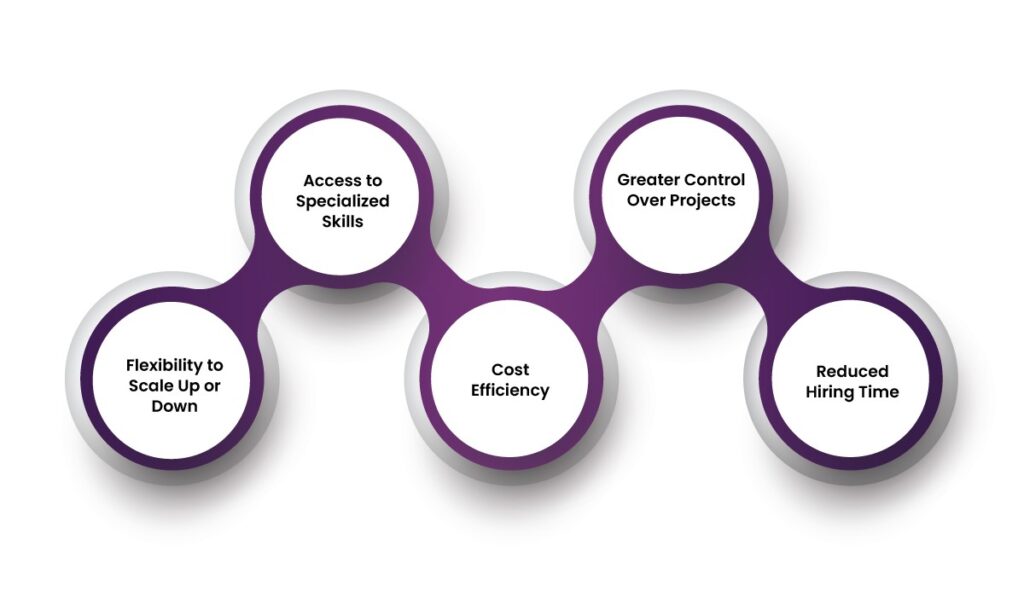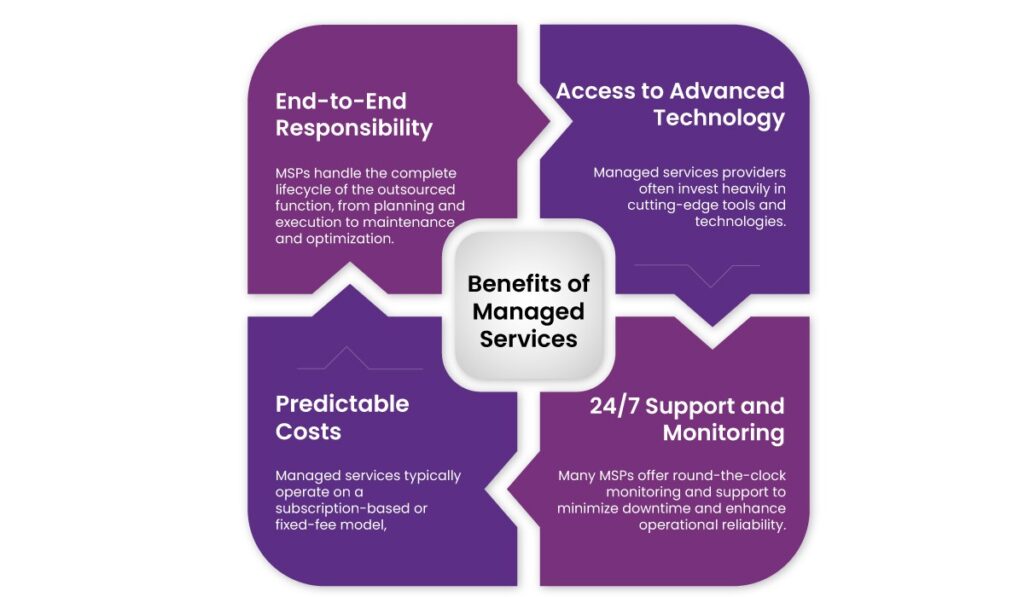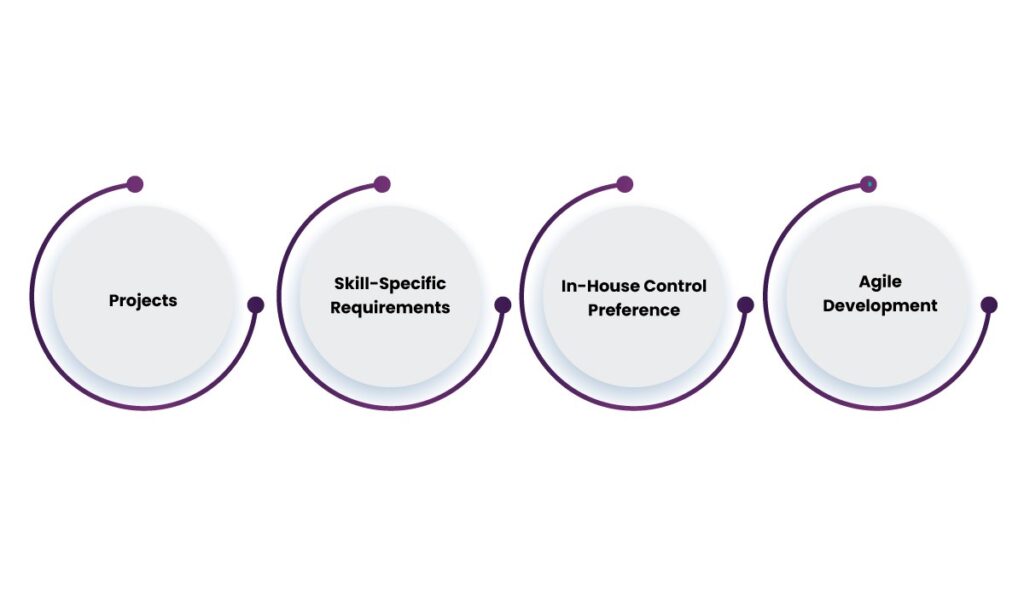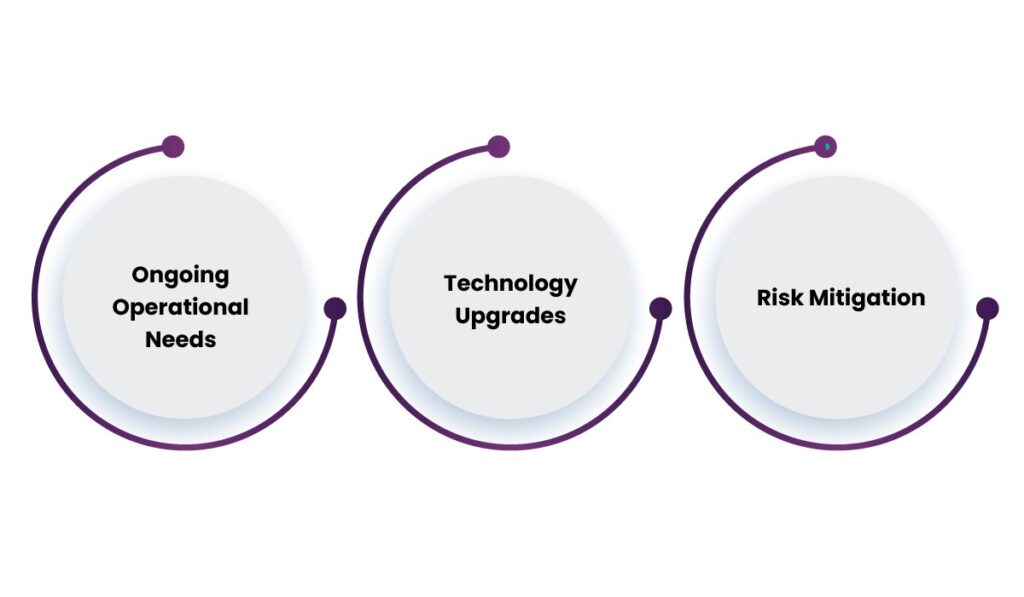The digital era has transformed how businesses function, collaborate, and grow. With rapid technological advancements and increasing competition across industries, organizations are constantly looking for new approaches to optimize operations and achieve their goals. Among the many strategies available, staff augmentation and managed services have emerged as highly effective methods for addressing resource management challenges. While both approaches offer great benefits, they meet different organizational needs.
In this blog, we’ll discuss the key advantages of staff augmentation vs managed services.
Table of Contents
What is Staff Augmentation?
Staff augmentation is a flexible outsourcing strategy where companies hire external professionals to work alongside their in-house team. These professionals act as an extension of the internal workforce, filling skill gaps, handling temporary workloads, or contributing expertise to specific projects. This model is particularly popular in technology-driven industries where specialized skills are often required on short notice.
Benefits of Staff Augmentation Services
Let’s dive deeper into the key benefits of staff augmentation services:
1. Flexibility to Scale Up or Down
Businesses often face shifting demands based on project timelines, market trends, or client needs. However, hiring permanent employees for this short-term need would not only be costly but also impractical. Staff augmentation offers the perfect solution for such circumstances. With this model, businesses can quickly onboard skilled professionals for the duration required and seamlessly reduce their workforce once the work is complete.
2. Access to Specialized Skills
The rise of cutting-edge technologies like artificial intelligence (AI), cloud computing, etc., has created a demand for highly specialized talent. However, building an in-house team with expertise in these areas can be costly for some organizations.
Meanwhile, staff augmentation bridges this gap by connecting businesses with experienced professionals. Whether you need a data scientist for a six-month AI initiative or a cybersecurity expert for a fintech project, staff augmentation provides access to the right talent that might otherwise take months to recruit and train.
3. Cost Efficiency
The cost of hiring full-time employees extends far beyond their salaries. There are onboarding expenses, benefits like healthcare and retirement contributions, office space requirements, and ongoing training programs to consider. For projects with finite timelines, these costs can quickly outweigh the benefits.
Staff augmentation eliminates many of these financial burdens because companies only pay for the services they need. Also, since the professionals are sourced through third-party providers, there’s no need to worry about expenses like employee benefits or administrative costs. Therefore, it’s a streamlined way to optimize budgets without compromising on talent.
4. Greater Control Over Projects
Outsourcing entire projects to third-party vendors can sometimes feel like losing control. As a result, companies may struggle with communication gaps or misaligned goals. Staff augmentation, on the other hand, offers a middle ground. With this model, the augmented staff integrates directly with your internal team and boosts collaboration. Essentially, you retain full control over the project while benefiting from the additional expertise needed to drive it forward.
5. Reduced Hiring Time
Recruitment is often time-consuming, especially for technical roles where finding the right fit can take months. In fast-paced industries, such delays can lead to missed opportunities and project setbacks.
Staff augmentation providers like Helixbeat simplify this by maintaining a pool of pre-vetted professionals with diverse skill sets. Need a software developer next week? Looking for a project manager who can start immediately? We can connect you with the right talent in a fraction of the time it would take through traditional hiring methods.

What are Managed Services?
Managed services involve outsourcing specific business functions or operations to a third-party service provider. Unlike staff augmentation, where professionals integrate into the existing team, managed services providers (MSPs) take full responsibility for managing the outsourced function. This model is widely used for IT support, cybersecurity, cloud management, and other operational needs.
Benefits of Managed Services
1. End-to-End Responsibility
MSPs handle the complete lifecycle of the outsourced function, from planning and execution to maintenance and optimization. This helps the companies to focus on core business activities without being bogged down by operational complexities.
2. Access to Advanced Technology
Managed services providers often invest heavily in cutting-edge tools and technologies. By partnering with MSPs, companies can leverage these resources without the need for direct investments and gain a competitive edge.
3. Predictable Costs
Managed services typically operate on a subscription-based or fixed-fee model, which allows businesses to forecast and control their IT or operational budgets effectively. This predictability is especially valuable for small and medium enterprises (SMEs) with limited financial resources.
4. 24/7 Support and Monitoring
Many MSPs offer round-the-clock monitoring and support to minimize downtime and enhance operational reliability. This feature is particularly vital for industries where uptime is critical, such as e-commerce, healthcare, finance, etc.

Staff Augmentation vs. Managed Services: A Comparative Analysis
| Aspect | Staff Augmentation | Managed Services |
| Flexibility | Offers on-demand scalability | Limited flexibility due to predefined contracts |
| Control | High control over projects | Delegated control to the service provider |
| Cost Model | Pay-as-you-go | Subscription or fixed-fee model |
| Expertise | Access to niche skills | Access to managed expertise |
| Integration | Professionals integrate with internal teams | Operates independently |
| Responsibility | The internal team retains project responsibility | MSP takes end-to-end responsibility |
Choosing the Right Model for Your Business
Although the choice between staff augmentation and managed services depends on various factors, including your project scope, budget, and internal capabilities. Let’s explore general scenarios where each model excels:
When to Choose Staff Augmentation
- Projects: For projects with defined timelines or seasonal spikes in demand, staff augmentation provides the flexibility to scale resources without long-term commitments.
- Skill-Specific Requirements: If your project involves emerging technologies or niche skills that your current team lacks, staff augmentation effectively bridges the gap.
- In-House Control Preference: Companies that prefer to retain direct oversight of projects and align resources closely with internal teams often benefit from this model.
- Agile Development: In agile environments where requirements evolve rapidly, having external professionals who can adapt to changing priorities is invaluable.

When to Choose Managed Services
- Ongoing Operational Needs: Managed services offer reliability and efficiency for continuous functions like IT support, network management, etc.
- Technology Upgrades: MSPs provide the necessary support and tools to modernize operations if your organization lacks the expertise or infrastructure to adopt new technologies.
- Risk Mitigation: Managed services providers often have robust risk management practices, which makes them perfect for critical operations where downtime or errors could have significant repercussions.

Final Words
In the digital era, resource management is no longer a one-size-fits-all approach. Both staff augmentation and managed services offer compelling benefits, but their suitability depends on your specific needs and objectives.
Looking to build a highly skilled, scalable team without the lengthy hiring process? At Helixbeat, our IT staff augmentation services connect you with top-tier talent across industries. Whether you need short-term expertise or long-term support, Helixbeat is your trusted partner for flexible and efficient workforce solutions.
FAQs
1. What is staff augmentation, and how does it work?
Staff augmentation is a flexible outsourcing strategy where businesses hire external professionals to work alongside their in-house teams. These professionals fill skill gaps, handle temporary workloads, or provide expertise for specific projects.
2. What industries benefit the most from staff augmentation?
Industries like technology, healthcare, finance, and e-commerce, where specialized skills are in high demand, benefit greatly from staff augmentation.
3. How is staff augmentation different from managed services?
Staff augmentation integrates external professionals with your internal team, giving you direct project control. In contrast, managed services delegate entire operations or functions to a third-party provider.
4. How can staff augmentation reduce recruitment time?
Staff augmentation providers like Helixbeat maintain a pool of pre-vetted professionals, thus helping companies quickly access skilled talent without the delays associated with traditional hiring processes.
5. What factors should a business consider when choosing between staff augmentation and managed services?
Businesses should consider their project scope, budget, internal team capabilities, the required level of control, and the duration of the need for external resources.














